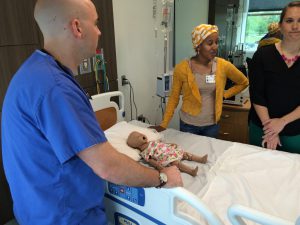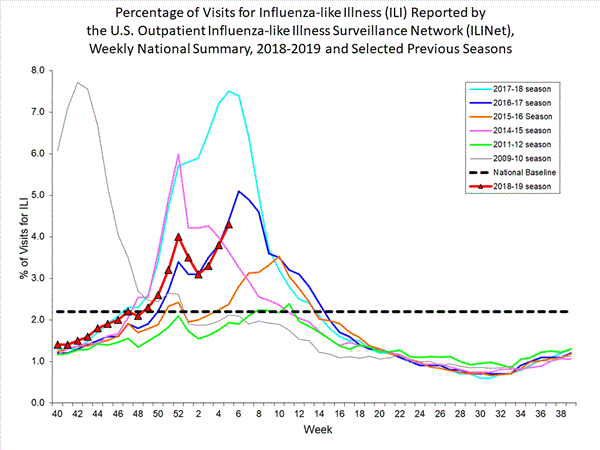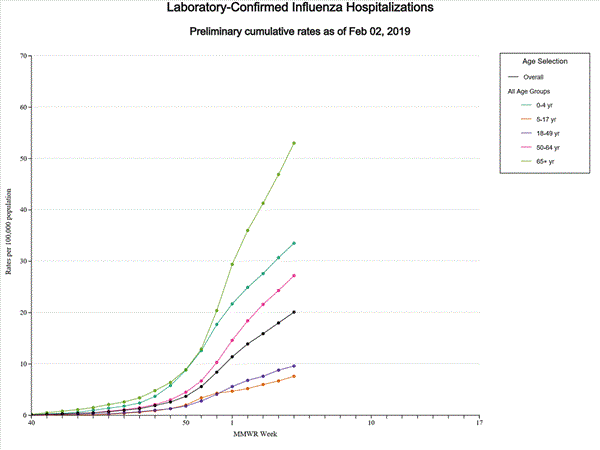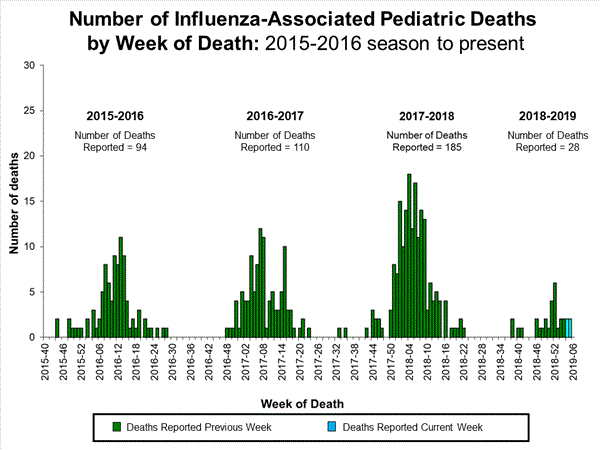Archive for February, 2019
MERS-CoV cases announced from Wadi al-Dawasir
Tuesday, February 12th, 201903/02/2019 19-1793
MERS in Riyadh city: 75-year-old male in Riyadh city, Riyadh region Contact with camels: No Case classification: Primary, community acquired Current status: Hospitalized
ﻣ ﺔﻣزﻼﺘ قﺮﺸﻟا ﻂﺳوﻷا ﺔﻴﺴﻔﻨﺘﻟا ﻦﻣ ﺔﻨﻳﺪﻣ اﻟﺮﻳﺎض: ﻣﻨﻄﻘﺔ اﻟﺮﻳﺎض ، ﻋﺎ ًﻣﺎ ﻦﻣ ﺔﻨﻳﺪﻣ اﻟﺮﻳﺎض 75 ﻞﺟر ﻳ ﻎﻠﺒ ﺔﻄﻟﺎﺨﻣ ﻞﺑﻺﻟ ﻻ: ﻣﻜﺘﺴﺒﺔ ﻓﻲ اﻟﻤﺠﺘﻤﻊ ، ﻒﻴﻨﺼﺗ ﺔﻟﺎﺤﻟا أ:ﺔﻴﻟو ﺔﻟﺎﺣ اﻟﻤﺮﻳﺾ :مﻮﻨﻣ ﻲﻓ اﻟﻤﺴﺘﺸﻔﻰ
03/02/2019 19-1794
MERS in Wadi Aldwasir city: 55-year-old male in Wadi Aldwasir city, Riyadh region Contact with camels: Yes Case classification: Secondary, healthcare-acquired Current status: Hospitalized
ﻣ ﺔﻣزﻼﺘ قﺮﺸﻟا ﻂﺳوﻷا ﺔﻴﺴﻔﻨﺘﻟا ﻦﻣ ﺔﻨﻳﺪﻣ يداو ، ﻋﺎ ًﻣﺎ ﻦﻣ ﺔﻨﻳﺪﻣ يداو اﻟﺪواﺳﺮ 55 اﻟﺪواﺳﺮ: ﻞﺟر ﻳ ﻎﻠﺒ ﺔﻘﻄﻨﻣ اﻟﺮﻳﺎض ﺔﻄﻟﺎﺨﻣ ﻞﺑﻺﻟ :ﻢﻌﻧ ﻣﻜﺘﺴﺒﺔ ﻓﻲ ﻣﻨﺸﺄة ﺔﻴﺤﺻ ، ﻒﻴﻨﺼﺗ ﺔﻟﺎﺤﻟا :ﺔﻳﻮﻧﺎﺛ ﺔﻟﺎﺣ اﻟﻤﺮﻳﺾ :مﻮﻨﻣ ﻲﻓ اﻟﻤﺴﺘﺸﻔﻰ
03/02/2019 19-1795
MERS in Wadi Aldwasir city: 40-year-old male in Wadi Aldwasir city, Riyadh region Contact with camels: yes Case classification: Secondary, household contact Current status: Hospitalized
Hooch in Uttar Pradesh: The death toll of the hooch tragedy climbed up to 92 on Saturday
Tuesday, February 12th, 2019“……So far, 39 people were arrested in Saharanpur while 35 cases have been registered in the area….. The police conducted raids on illegal liquor shops across the state……”
Latest research: “End-of-season influenza vaccine efficacy for the 2017-2018 flu season was a mediocre 38% (95% CI 31%-43%), but flu shots were still estimated to have prevented 7 million illnesses and 8,000 deaths…”
Monday, February 11th, 2019Effects of Influenza Vaccination in the United States during the 2017–2018 Influenza Season
HIV, circumcision & Tanzanian members of Parliament
Monday, February 11th, 2019“A female MP in Tanzania has called for checks to determine whether or not her male colleagues have undergone circumcision – a procedure known to reduce the risk of HIV transmission……The World Health Organization (WHO) says circumcision reduces the risk of heterosexual men contracting HIV by around 60%……”
DRC and EBV: Outbreak totals now stand at 800 cases, including 502 deaths, and 178 suspected cases are still under investigation.
Monday, February 11th, 2019SITUATION ÉPIDÉMIOLOGIQUE DANS LES PROVINCES DU NORD-KIVU ET DE L’ITURI
Vendredi 8 février 2019
- Depuis le début de l’épidémie, le cumul des cas est de 800, dont 739 confirmés et 61 probables. Au total, il y a eu 502 décès (441 confirmés et 61 probables) et 271 personnes guéries.
- 178 cas suspects en cours d’investigation.
- 2 nouveaux cas confirmés, dont 1 à Oicha et 1 à Kyondo
- 3 nouveaux décès de cas confirmés :
- 1 décès communautaire à Kyondo
- 2 décès au CTE, dont 1 à Butembo et 1 à Katwa
- 7 nouveaux cas probables (décès historiques) validés à Katwa.
- Plus d’informations à ce sujet seront fournis dans le bulletin du samedi 9 février 2019.
- 4 nouvelles personnes guéries sorties du CTE de Butembo.

2018-2019 Influenza Season Week 5 ending February 2, 2019: Influenza activity increased in the United States.
Saturday, February 9th, 2019Influenza activity increased in the United States. Influenza A(H1N1)pdm09, influenza A(H3N2), and influenza B viruses continue to co-circulate. Below is a summary of the key influenza indicators for the week ending February 2, 2019
- Viral Surveillance:The percentage of respiratory specimens testing positive for influenza viruses in clinical laboratories increased. Influenza A viruses have predominated in the United States since the beginning of October. Influenza A(H1N1)pdm09 viruses have predominated in most areas of the country, however influenza A(H3) viruses have predominated in the southeastern United States (HHS Region 4).
- Virus Characterization:The majority of influenza viruses characterized antigenically and genetically are similar to the cell-grown reference viruses representing the 2018–2019 Northern Hemisphere influenza vaccine viruses.
- Antiviral Resistance:The vast majority of influenza viruses tested (>99%) show susceptibility to oseltamivir and peramivir. All influenza viruses tested showed susceptibility to zanamivir.
- Influenza-like Illness Surveillance:The proportion of outpatient visits for influenza-like illness (ILI) increased to 4.3%, which is above the national baseline of 2.2%. All 10 regions reported ILI at or above their region-specific baseline level.
- ILI State Activity Indictor Map: New York City and 24 states experienced high ILI activity; Puerto Rico and 10 states experienced moderate ILI activity; the District of Columbia and 13 states experienced low ILI activity; and three states experienced minimal ILI activity.
- Geographic Spread of Influenza: The geographic spread of influenza in Puerto Rico and 47 states was reported as widespread; two states reported regional activity; the District of Columbia and one state reported local activity; the U.S. Virgin Islands reported sporadic activity; and Guam did not report.
- Influenza-associated Hospitalizations A cumulative rate of 20.1 laboratory-confirmed influenza-associated hospitalizations per 100,000 population was reported. The highest hospitalization rate is among adults 65 years and older (53.0 hospitalizations per 100,000 population).
- Pneumonia and Influenza Mortality: The proportion of deaths attributed to pneumonia and influenza (P&I) was below the system-specific epidemic threshold in the National Center for Health Statistics (NCHS) Mortality Surveillance System.
- Influenza-associated Pediatric Deaths: Four influenza-associated pediatric deaths were reported to CDC during week 5.
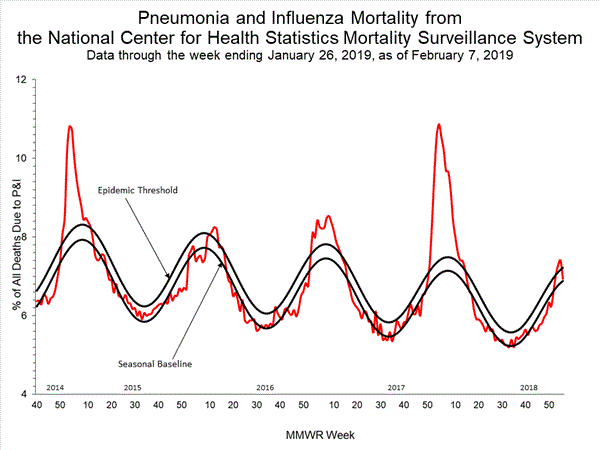
An increase in reports of acute flaccid paralysis (AFP) in the United Kingdom, 1 January 2018–21 January 2019.
Friday, February 8th, 2019“…..As at 21 January 2019, 40 cases had been identified with a peak in October 2018. The increase was temporally associated with an upsurge in enterovirus (EV) D68 activity. Enterovirus was detected in 15 cases, mainly from respiratory tract samples; nine were typed as EV-D68……”
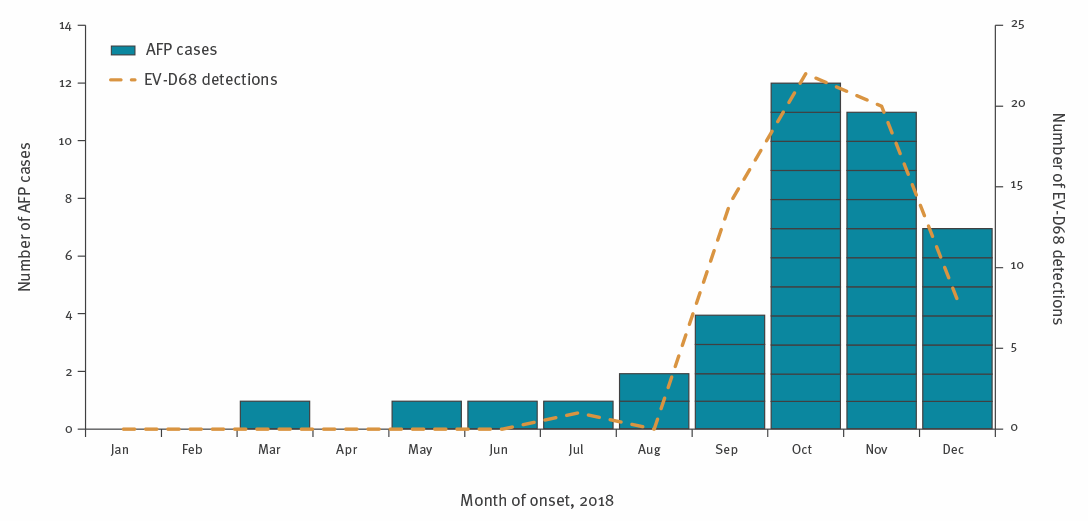
Measles Red Flag in the Philippines
Friday, February 8th, 2019he Department of Health (DOH) raised today the red flag for measles in other regions of Luzon, Central and Eastern Visayas aside from yesterday’s declaration in the National Capital Region.
As of 26 January 2019, validated data from CALABARZON was 575 cases with 9 deaths (CFR 2%) (2,538% an increase as compared to 21 cases of 2018), NCR was 441 with 5 deaths (CFR 1%) (1,125% increase as compared to 36 cases of 2018), Region 3 had 192 cases with 4 deaths (CFR 2%) (500% increase compared to 32 cases of 2018), Region 6 with 104 cases and 3 deaths (CFR 3%) (550% increase compared to 16 cases of 2018) and Region 7 with 71 cases with 1 death (CFR 1%) (3,450% increase compared to 2 cases of 2018).
“We are expanding the outbreak from Metro Manila to the other regions as cases have increased in the past weeks and to strengthen surveillance of new cases and alert mothers and caregivers to be more vigilant,” Health Secretary Francisco T. Duque III said.
Other regions showed the number of cases reported at 70 cases with no deaths for MIMAROPA (3,400% increase compared to 2 cases of 2018), Region 1 with 64 cases with 2 deaths (CFR 3%) (220% increase compared to 20 cases of 2018), Region 10 with 60 cases with no deaths reported (4% decrease compared to 63 cases in 2018), Region 8 with 54 cases and 1 death (2% CFR) (5,300% increase compared to 1 case of 2018), Region 12 with 43 cases with no deaths (34% decrease compared to 66 cases of 2018). These regions should likewise step-up their response against this highly communicable disease, as well as ensure that preventive measures play a vital role in preventing the spread of the disease; these must be emphasized to mothers and the general public as a whole.
Measles is a highly contagious respiratory disease caused by a virus. It is transferred from person-to-person by sneezing, coughing, and close personal contact. Its signs and symptoms include cough, runny nose, red eyes/conjunctivitis, fever, skin rashes lasting for more than 3 days.
The disease’s complications included diarrhea, middle ear infection, pneumonia (infection of the lungs), encephalitis (swelling of the brain), malnutrition, blindness which may lead to death.
“Supportive measures like building the nutritional status of the sick person and increasing oral rehydration are important measures to increase body resistance and replace lost body fluids caused by coughing, diarrhea, and perspiration,” Duque said, adding that immunization and vitamin A supplementation of nine-month old children and unvaccinated individuals are the best defenses against measles.
The DOH is advising mothers, the public to bring their children at the first sign of fever to the nearest health facility for prompt treatment and proper case management.
Measles in Europe: record number of both sick and immunized
Friday, February 8th, 2019Copenhagen, 7 February 2019
More children in the WHO European Region are being vaccinated against measles than ever before; but progress has been uneven between and within countries, leaving increasing clusters of susceptible individuals unprotected, and resulting in a record number of people affected by the virus in 2018. In light of measles data for the year 2018 released today, WHO urges European countries to target their interventions to those places and groups where immunization gaps persist.
Measles killed 72 children and adults in the European Region in 2018. According to monthly country reports for January to December 2018 (received as of 01 February 2019), 82 596 people in 47 of 53 countries contracted measles. In countries reporting hospitalization data, nearly 2/3 (61%) of measles cases were hospitalized. The total number of people infected with the virus in 2018 was the highest this decade: 3 times the total reported in 2017 and 15 times the record low number of people affected in 2016.
The surge in measles cases in 2018 followed a year in which the European Region achieved its highest ever estimated coverage for the second dose of measles vaccination (90% in 2017). More children in the Region received the full two-dose series on time, according to their countries’ immunization schedules, in 2017 than in any year since WHO started collecting data on the second dose in 2000. Coverage with the first dose of the vaccine also increased slightly to 95%, the highest level since 2013. However, progress in the Region, based on achievements at the national level, can mask gaps at subnational levels, which are often not recognized until outbreaks occur.
“The picture for 2018 makes it clear that the current pace of progress in raising immunization rates will be insufficient to stop measles circulation. While data indicate exceptionally high immunization coverage at regional level, they also reflect a record number affected and killed by the disease. This means that gaps at local level still offer an open door to the virus,” says Dr Zsuzsanna Jakab. “We cannot achieve healthier populations globally, as promised in WHO’s vision for the coming five years, if we do not work locally. We must do more and do it better to protect each and every person from diseases that can be easily avoided.”
Preventable tragedy
While immunization coverage has improved overall in the Region, many people remain susceptible.
- Estimated coverage with the second dose of measles vaccine was below the 95% threshold to prevent circulation (that is, to achieve “herd immunity”) in 34 countries of the Region in 2017.
- Subnational coverage rates point to disparities even within countries.
- Suboptimal coverage for either dose sets the stage for transmission in the future.
The European Vaccine Action Plan 2015–2020 (EVAP) lays out a strategy endorsed by all 53 Member States to eliminate both measles and rubella. Most importantly, at least 95% of every population needs to be immune, through two doses of vaccination or prior exposure to the virus, to ensure community protection for everyone – including babies too young to be vaccinated and others who cannot be immunized due to existing diseases and medical conditions.
“In adopting EVAP, all countries in the European Region agreed that elimination of measles and rubella is possible, and is also a cost-effective way to protect people of all ages from avoidable suffering and death,” says Dr Nedret Emiroglu, Director of the Division of Health Emergencies and Communicable Diseases, WHO Regional Office for Europe.
Forty-three European countries interrupted transmission of endemic measles for at least 12 months as of the end of 2017. Some of them, also managed to limit the spread of the virus following importation to very few cases in 2017 and 2018, showing that elimination of the disease is well within reach for the whole Region. “Progress in achieving high national coverage is commendable. However, it cannot make us blind to the people and places that are still being missed. It is here that we must now concentrate increased efforts. We should never become complacent about our successes but continue to strive to reach the final mile. Together we can make this happen,” concludes Dr Emiroglu.
Closing the door on measles
Many factors contribute to suboptimal immunization coverage and the spread of measles. To prevent outbreaks and eliminate measles, countries need to sustain high national and subnational immunization coverage with two doses of measles-containing vaccine, as well as identify and address all pockets of underimmunization among their populations.
The Regional Office continues to work with countries in the Region to enhance their immunization and disease surveillance systems. This includes building capacities and providing guidance to:
- ensure that all population groups have equitable access to vaccination services and that these are convenient;
- identify who has been missed in the past and reach them with the vaccines they need;
- ensure that health workers are vaccinated to prevent transmission in health facilities, and that they have sufficient technical knowledge about vaccines and the immune system to feel confident in recommending vaccination to their patients;
- strengthen trust in vaccines and health authorities;
- secure access to a timely and affordable supply of vaccines;
- improve outbreak detection and response;
- listen and respond to people’s concerns, and respond to any health event that could be potentially related to vaccine safety.
Most of the countries struggling with suboptimal immunization coverage against measles in the Region are middle-income countries. The Regional Office is working with these countries to implement a coordinated strategy to address targeted programme areas.
NASA: 2018 was Fourth Warmest Year in Continued Warming Trend
Friday, February 8th, 2019
According to an ongoing temperature analysis conducted by scientists at NASA’s Goddard Institute for Space Studies, the average global temperature on Earth has increased by about 0.8° Celsius (1.4° Fahrenheit) since 1880. Two-thirds of the warming has occurred since 1975, at a rate of roughly 0.15-0.20°C per decade.


